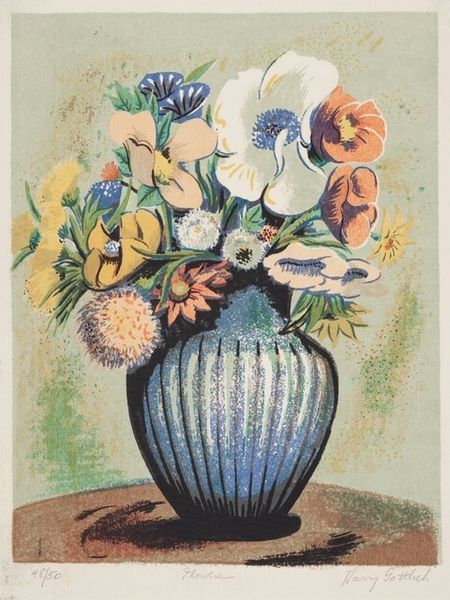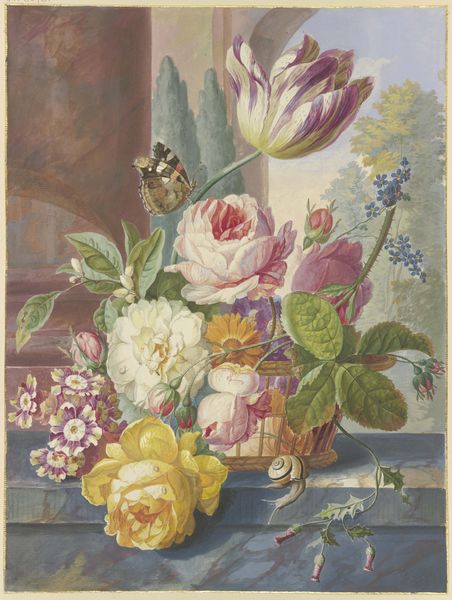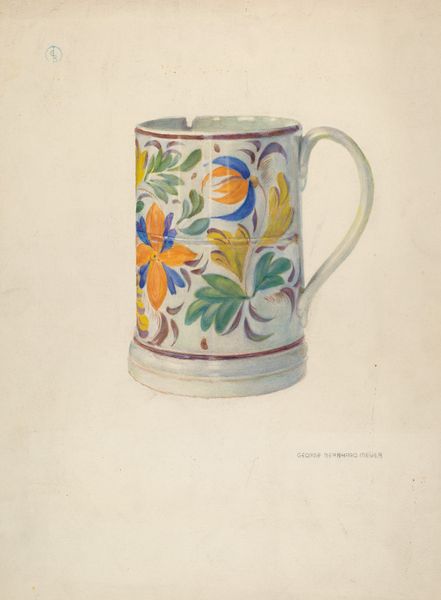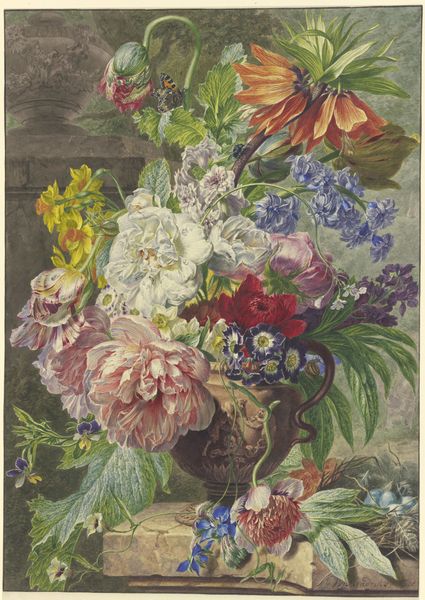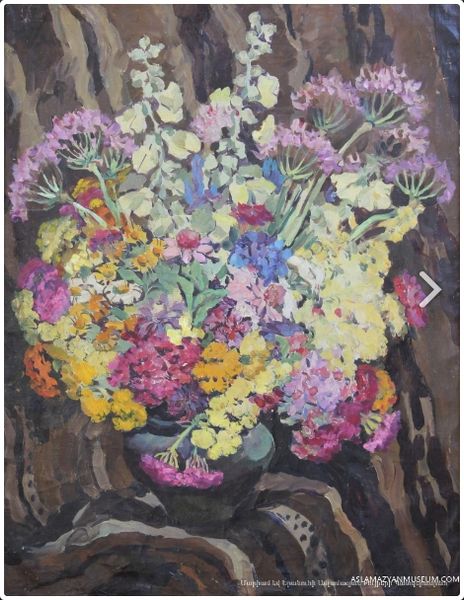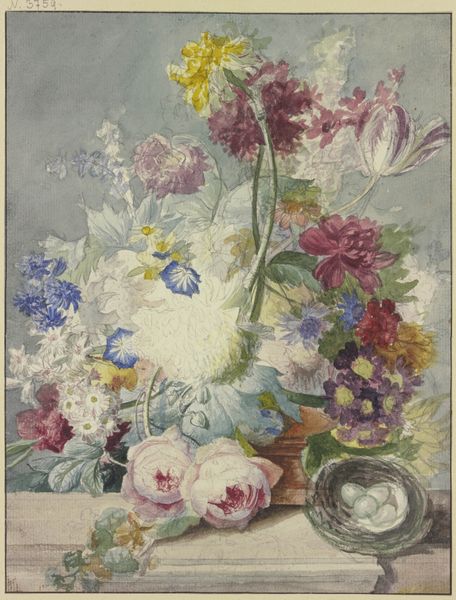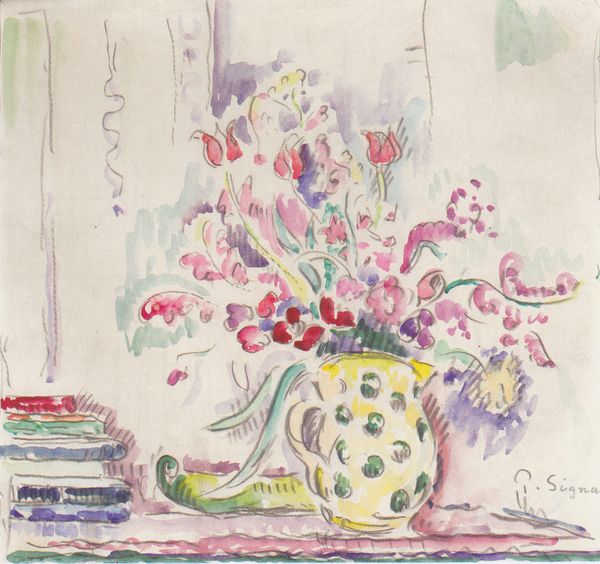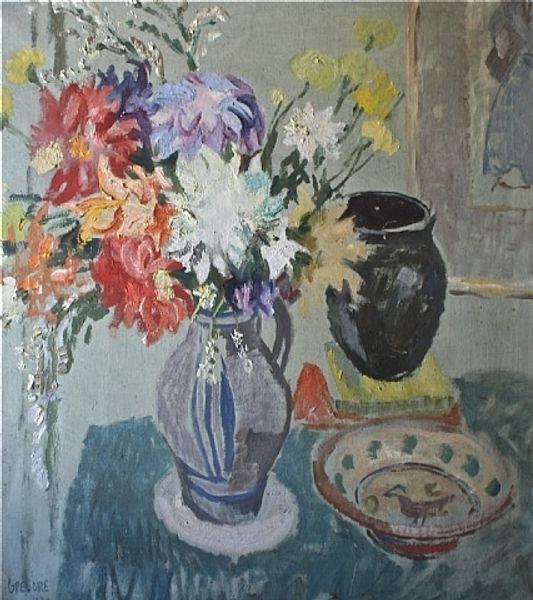
painting, print, watercolor
#
water colours
#
painting
# print
#
watercolor
#
naive art
Dimensions: Image: 367 x 291 mm Sheet: 483 x 330 mm
Copyright: National Gallery of Art: CC0 1.0
Curator: This brightly colored print is Harry Shokler's "Zinnias in a Quimper Vase," created in 1941 using watercolor. What's your initial take on this piece? Editor: It’s intensely cheerful, isn't it? The vividness almost feels like a deliberate act of optimism, considering when it was made – during wartime, when joy might have been a radical act. The composition seems a little naive, yet it has a strange compelling balance. Curator: Absolutely. It evokes a feeling of accessible joy through these vibrant Zinnias. Zinnias themselves, due to their bright colors and resilience, symbolize remembrance and affection, especially between friends. Perhaps Shokler intended the artwork as a visual emblem of friendship during challenging times? Editor: It certainly aligns with that. I'm also struck by how the print incorporates "naive art" aesthetics, making the subject matter relatable to the public. By depicting the vase, which appears to be Quimper pottery, and its folk art qualities, Shokler also taps into the social landscape, representing everyday people and working-class culture during a time of socio-political upheaval. Curator: That’s insightful. The pitcher depicts a figure that seems inspired by traditional Dutch or Breton folk costumes—connecting the image to concepts of cultural identity. Editor: Yes, these allusions tie into broader themes of preserving and celebrating cultural heritage. And look how the red and white checkered tabletop disrupts our expectations for foreground space; its grid-like structure provides structure while hinting at tensions during its era. Curator: The tension is subtle yet palpable. Perhaps reflecting the push and pull between maintaining tradition and the disruptions of modernity and war? Shokler uses recognizable symbols and images to elicit continuity, reflecting an underlying wish for cultural values to prevail through the disruptions. Editor: I agree. I see in the work how our daily life still holds significant weight under broader changes; its visual representation makes our historical understanding so rich, as it speaks through identity. Curator: Indeed. Examining "Zinnias in a Quimper Vase" from 1941 today offers insight into its complex interplay between individual expression, shared experiences, and lasting cultural emblems during a critical point in time. Editor: It becomes apparent to me that through art, we confront history with great intensity; reflecting how the individual's feelings during global turmoil speak for societal sentiment as well.
Comments
No comments
Be the first to comment and join the conversation on the ultimate creative platform.

